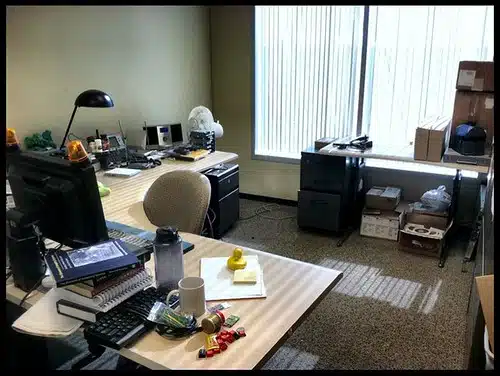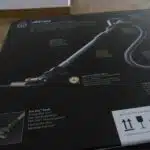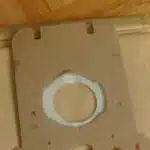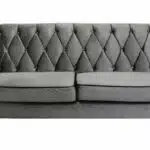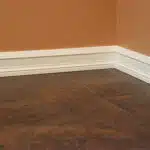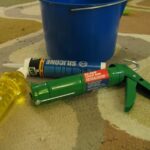Effective cleaning is an essential part of maintaining a clean and hygienic environment. It is crucial to ensure that every nook and cranny of a space is cleaned thoroughly, especially the hard-to-reach places. These areas often accumulate dust, dirt, and grime, which can be hazardous to health if left uncleaned for extended periods.
Cleaning 11 hard-to-reach places requires a keen eye for detail and specific cleaning techniques. As a professional cleaning expert, it is my duty to provide you with tips on how to clean these challenging areas effectively. From high ceilings to tight corners and narrow crevices, this article will explore the best ways to clean these areas without causing damage or compromising safety. By following these recommendations, you can rest assured that your space will be spotless and free from harmful substances that may affect your well-being.
High Ceilings And Light Fixtures
High ceilings and light fixtures can be a challenge to clean. These areas require special attention and care to ensure that they are cleaned properly without causing damage. When it comes to cleaning these spaces, there are several things to consider, including choosing ladders, protecting light fixtures, DIY vs. hiring professionals, and best products for high ceilings.
When choosing a ladder for cleaning high ceilings or light fixtures, safety should be the top priority. It is essential to choose a ladder that is sturdy and stable enough to support both your weight and the weight of the cleaning equipment you will be using. Additionally, make sure that the ladder is tall enough to reach the desired height easily.
Protecting light fixtures during cleaning is crucial since they are often fragile and expensive. Before beginning any cleaning process in this area, turn off all power sources connected to the light fixture you will be working on. Use a damp cloth or sponge with mild detergent soap solution to wipe down each fixture gently.
DIY cleaning may seem like an easy option when it comes to saving money but hiring professionals can provide better value in terms of quality workmanship. Professional cleaners will have experience in handling various types of surfaces and equipment required for high ceiling areas. They also have specialized products that can quickly do away with dirt buildup without damaging surfaces or light fixtures while leaving them looking brand new again.
Ceiling Fans And Air Vents
High ceilings and light fixtures can be quite a challenge to clean, but with the right tools and techniques, it can be done efficiently. Now that you have tackled those hard-to-reach spots, it’s time to move on to ceiling fans and air vents. Maintaining these areas is crucial for optimal air quality in your home or office.
Cleaning ceiling fans and air vents: maintenance tips When cleaning ceiling fans, it’s important to turn them off first before proceeding with the cleaning process. Use a ladder to reach the blades and wipe them down with a microfiber cloth or a duster. For more thorough cleaning, you may use a vacuum cleaner with an extension hose attachment. As for air vents, they can easily accumulate dust and debris over time. To clean them, remove the vent covers and wash them in warm soapy water. Use a vacuum cleaner with a soft brush attachment to remove dirt from inside the vent.
Best tools for the job To effectively clean ceiling fans and air vents, you will need some essential tools such as microfiber cloths or dusters, ladders, vacuum cleaners with extension hose attachments, and soft brush attachments for removing dirt from inside vents. These tools will allow you to reach high places without compromising safety while ensuring that every nook and cranny is cleaned thoroughly.
Now that you have learned some maintenance tips and best tools for cleaning ceiling fans and air vents let’s move on to window sills and frames. Just like other areas of your home or office, they also require regular cleaning to keep them looking their best!
Window Sills And Frames
Cleaning window sills and frames is an essential part of maintaining a healthy and hygienic living environment. Proper tools are crucial for efficient cleaning to ensure that all dirt, dust, and grime are removed effectively. The first step in cleaning window sills and frames is to gather the necessary equipment.
The equipment required for cleaning window sills and frames includes a microfiber cloth, vacuum cleaner with brush attachments, mild soap or vinegar solution, and a bucket of warm water. Start by removing any loose debris or dirt with the brush attachment on the vacuum cleaner. Next, dip the microfiber cloth into the soap or vinegar solution and wring it out gently before wiping down the window sills and frames thoroughly. Finally, use a clean damp cloth to rinse off any soap residue before drying with a dry towel.
Efficient cleaning techniques involve wiping in circular motions while applying gentle pressure to remove stubborn stains. For hard-to-reach areas such as corners or tight spaces between the window frame and sill, use a toothbrush dipped in soapy water to scrub away any dirt buildup. It is essential to maintain regular cleaning schedules to prevent dust accumulation on these surfaces, which can cause allergies or respiratory problems. By following these simple steps, you can keep your window sills and frames clean and hygienic at all times.
Moving forward with our discussion on hard-to-reach places that need thorough cleaning – next up are those pesky areas behind and under furniture that always seem to accumulate dust bunnies!
Behind And Under Furniture
- Vacuuming beneath and behind furniture is an essential part of household cleaning, as it ensures the removal of dust and debris that accumulates in hard-to-reach areas.
- When dusting furniture, it is important to remember to reach behind and underneath the item to ensure a thorough clean.
- Reaching behind and underneath furniture can be difficult. Utilizing various cleaning tools such as long-handled dusters, crevice tools and vacuum attachments can make the task easier.
- When vacuuming behind and underneath furniture, it is important to be aware of any fragile or delicate items that may be present in the area.
- Dusting behind and underneath furniture should be done on a regular basis to maintain a healthy and clean home environment.
- To ensure a complete clean, it is important to remember to vacuum and dust behind and underneath furniture on a regular basis.
Vacuuming
Keeping your home clean and tidy is essential for a healthy and comfortable living environment. However, cleaning hard-to-reach places like behind and under furniture can be a daunting task. Dust, debris, and pet hair tend to accumulate in these areas, making them the perfect breeding ground for allergens and bacteria. In this article, we will discuss vacuuming techniques and how to choose the right vacuum cleaner to make this task more manageable.
Vacuuming is an effective way of removing dirt from carpets, floors, and upholstery. However, improper vacuuming techniques can do more harm than good. To ensure that you get the most out of your vacuum cleaner, it’s crucial to use proper techniques when cleaning hard-to-reach places such as under furniture. Start by moving smaller furniture items out of the way before starting to vacuum. Next, use the crevice tool attachment to reach tight spaces between the walls and furniture legs.
Choosing the right vacuum cleaner is also important when it comes to cleaning hard-to-reach places. Look for a model with a long hose that can easily reach under furniture without having to move it around too much. Additionally, consider purchasing a cordless or handheld model that will allow you greater flexibility when cleaning tricky spots like stairs or upholstery. By using proper techniques and choosing the right vacuum cleaner for your needs, you’ll be able to keep your home clean and healthy for years to come!
Dusting
When it comes to keeping your home clean, dusting is just as important as vacuuming. Dust accumulates quickly in hard-to-reach places like behind and under furniture, which can lead to health issues like allergies and respiratory problems. Effective dusting techniques and using the right tools are crucial for maintaining a healthy living environment.
To effectively dust hard-to-reach areas, start by moving smaller furniture items out of the way. Use a microfiber cloth or duster to gently remove dust from surfaces without spreading it around. For tight spaces between furniture legs or walls, use a crevice tool attachment on your vacuum cleaner. Another great option is an extendable duster that can reach high areas without using a ladder.
There are also several dusting tools designed specifically for hard-to-reach places. For example, a flexible foam dusting wand can bend into tight spaces while still maintaining its shape. A long-handled feather duster can reach high areas without having to stand on a chair or ladder. By utilizing these tips and tools for effective dusting, you can keep your home clean and healthy even in those tricky spots behind and under furniture.
Reaching
Dusting behind and under furniture is a crucial part of keeping your home clean and healthy. However, reaching these areas can be a challenge, especially for those with limited mobility or space. In this subtopic, we will discuss some effective tips for reaching those tricky spots without risking injury or damage to your furniture.
One important consideration when dusting behind and under furniture is the use of ladders vs. step stools. While ladders can provide greater height and stability, they can also be bulky and difficult to maneuver in tight spaces. Step stools, on the other hand, are more lightweight and portable but may not provide enough height for taller pieces of furniture. It’s important to choose the right tool for the job based on your specific needs and limitations.
Another helpful tip for reaching behind and under furniture is to use extension tools. These tools come in a variety of shapes and sizes, from flexible wands to long-handled dusters, that allow you to reach high areas without having to stand on a chair or ladder. When choosing an extension tool, consider the type of surface you’ll be dusting as well as any special features like adjustable angles or detachable heads.
In conclusion, there are several effective tips for reaching behind and under furniture when dusting. By choosing the right tool for the job and using extension tools when necessary, you can maintain a clean and healthy living environment without putting yourself or your furniture at risk. Remember to take your time and be gentle when dusting delicate surfaces, and always prioritize safety above all else.
Walls And Baseboards
As a professional cleaner, it’s important to recognize that walls and baseboards are often overlooked but are essential areas to clean. One of the most effective techniques for cleaning walls is by using a steamer. A steamer can remove dirt, grime, and even stains from walls without causing damage or leaving any residue.
When cleaning baseboards, it’s important to use the correct tools and products. Start by dusting them off with a soft-bristled brush or a microfiber cloth. To maintain their shine, consider applying a thin layer of furniture polish or wax after wiping them down with a damp cloth. This will help protect them from future damage and make them easier to clean in the future.
By incorporating these tips into your cleaning routine, you can ensure that your walls and baseboards remain clean and well-maintained. In addition to enhancing the appearance of your home or office, regularly cleaning these areas can also improve air quality and reduce allergens. With these simple steps, you can create a safer and more comfortable environment for yourself and those around you.
Transitioning into the subsequent section about tight corners and edges, it’s important to note that these areas require special attention as well. While they may be difficult to reach, neglecting them can lead to buildup of dirt and debris over time. By following our tips for cleaning walls and baseboards along with additional techniques for tackling tight spaces, you’ll have all the tools necessary for achieving a spotless living or work space.
Tight Corners And Edges
Walls and baseboards are critical areas in a home. However, tight corners and edges are often ignored during cleaning routines. Neglecting these parts can lead to the accumulation of dust, dirt, and debris that could pose serious health risks. To ensure a healthy living environment, it is essential to clean these hard-to-reach places thoroughly.
Cleaning tight corners and edges requires DIY tools or professional cleaning services. With reaching aids such as extendable wands, microfiber cloths, and crevice tools, accessing difficult spaces becomes easier. These tools guarantee effective cleaning without harming the surface area. However, using them requires safety tips such as wearing gloves to protect your hands from sharp edges or splinters.
Here are five bullet points that illustrate how to clean tight corners and edges effectively:
- Start by dusting off the surfaces with a microfiber cloth.
- Use a handheld vacuum cleaner to suck up dirt from the corners.
- Wipe down the surface with an all-purpose cleaner and a soft-bristled brush.
- For stubborn stains or grease buildup, use vinegar diluted with hot water.
- Rinse with warm water and dry it off immediately.
As you clean tight corners and edges, always prioritize safety by following guidelines recommended for using DIY tools or professional cleaning services. By doing so, you will have a clean living environment free of harmful dust particles that could cause respiratory problems. The next section discusses how to clean kitchen appliances and cabinets without causing damage.
Kitchen Appliances And Cabinets
Kitchen Appliances and Cabinets are some of the most used items in a household, which means they also tend to accumulate dirt and grime over time. Keeping them clean is essential not only for aesthetic reasons but also for maintaining their functionality. Here are some tips on how to keep your appliances and cabinets looking brand new.
Firstly, it is important to note that using the right products can make all the difference when it comes to cleaning your kitchen appliances and cabinets. Top Products such as stainless steel cleaners or wood polishers can help you achieve a deep clean without damaging the surfaces. Additionally, DIY Solutions like vinegar and baking soda can be an affordable alternative to store-bought cleaning products. However, always make sure to test any product on a small area before applying it liberally.
Secondly, regular cleaning is key to preventing buildup and maintaining the appearance of your kitchen appliances and cabinets. Wipe down surfaces with a damp cloth after each use, paying special attention to areas that are prone to fingerprints or grease stains. For tough stains or hard-to-reach areas, use a toothbrush or cotton swab dipped in cleaning solution. Don’t forget about the inside of your appliances either – empty and clean out your fridge regularly to avoid unpleasant odors.
Lastly, organization can play a big role in keeping your kitchen clean and tidy. Consider investing in drawer dividers or shelf organizers for your cabinets so that everything has its place. This will not only make finding what you need easier but will also prevent clutter from accumulating on surfaces.
When it comes to keeping your Kitchen Appliances and Cabinets clean, there are many Top Products and DIY Solutions available that can make the job easier. Remember to always use caution when trying out new cleaning methods, especially on delicate surfaces. By incorporating regular cleaning into your routine along with organization practices, you can ensure that these items stay looking as good as new for years to come.
Transition: Now that we’ve covered the best practices for cleaning your Kitchen Appliances and Cabinets, let’s move on to another area of the house that requires extra attention – bathroom tiles and grout.
Bathroom Tiles And Grout
- Proper preparation is essential before cleaning bathroom tiles and grout, as this will ensure the process is efficient and effective.
- Important considerations prior to cleaning include the type of tile and grout, as well as the level of soiling.
- A variety of products and tools are available for cleaning bathroom tiles and grout, with choices ranging from natural to chemical-based solutions.
- When selecting products and tools, it is important to consider the desired outcomes and the type of surface being cleaned.
Preparing For Cleaning
Bathroom tiles and grout can be a challenge to clean, especially if the area is hard-to-reach. As a professional cleaning expert, I suggest that you start with efficient preparation before diving into the cleaning process. Preparation is key to making sure that your efforts are not in vain, and that you achieve the desired outcome. Tips for efficient preparation include removing all items from the bathroom, such as towels and toiletries, as well as opening windows or turning on fans for proper ventilation.
When preparing to clean bathroom tiles and grout, it’s important to prioritize safety measures. This means wearing protective gear such as gloves and goggles to prevent any chemical exposure or debris from affecting your skin or eyesight. You should also make sure that there is adequate lighting in the bathroom to avoid any unwanted accidents or injuries. Additionally, ensure that any cleaning products you use are safe and appropriate for the surface you are cleaning.
In conclusion, efficient preparation and safety measures are crucial when tackling hard-to-reach places like bathroom tiles and grout. By following these tips, you’ll have a better chance of achieving a sparkling clean result without compromising your safety or damaging your tiles and grout. Remember to take your time when cleaning hard-to-reach areas, as this will ensure that every nook and cranny is addressed properly.
Cleaning Products And Tools
When it comes to cleaning bathroom tiles and grout, the right cleaning products and tools are essential. Top rated cleaning products for hard-to-reach places are those that are specially formulated to penetrate grime and dirt in tile crevices and hard-to-reach spots. These products come in different types such as sprays, foams, and gels that are designed to work on different surfaces.
Effective tools for cleaning hard-to-reach spots include brushes with long handles that can reach deep into crevices, making it easier to scrub away stubborn stains. Additionally, microfiber cloths or sponges can be used to wipe away dirt from tiles and grout without leaving any residue. It’s also important to use a cleaner that is safe for your tiles and won’t cause damage or discoloration.
When using cleaning products and tools, it’s important to read the instructions carefully and follow them precisely. Always wear protective gear such as gloves and goggles when handling chemicals to avoid any unwanted accidents or injuries. Lastly, rinse off all surfaces thoroughly with water after cleaning to remove any remaining residue of cleaning products. By using top-rated cleaning products for hard-to-reach places along with effective tools, you’ll be able to achieve a sparkling clean result in no time!
Showerheads And Faucets
Showerheads and faucets are essential fixtures in any home. They are used every day, making them prone to buildup and rust. The buildup can cause the showerheads and faucets to become clogged and reduce the water pressure, while rust can damage the fixtures beyond repair. As a cleaning expert, it is imperative to know how to remove buildup and prevent rust from developing on these fixtures.
Removing buildup from showerheads and faucets is essential to maintaining their longevity. DIY methods such as vinegar or baking soda solutions can be effective in removing mild buildups; however, professional cleaning may be necessary for more severe cases. Professional cleaning services have access to specialized equipment that can clean even the most stubborn buildup.
Preventing rust from forming on showerheads and faucets is equally important. Rust not only affects the appearance of these fixtures but also causes irreparable damage over time. One way to prevent rust is by using products that contain a rust inhibitor. These products create a protective barrier around the fixture, preventing moisture from seeping through and causing oxidation.
To ensure your showerheads and faucets remain in top condition, here are some tips:
- Use a soft cloth or sponge when cleaning to avoid scratching the surface
- Replace worn-out washers regularly
- Avoid using abrasive cleaners that can damage the finish
In conclusion, taking care of your showerheads and faucets is crucial for maintaining their functionality and aesthetic appeal. Whether you choose to DIY or hire a professional cleaner, ensuring that you use the right products and techniques will go a long way in preserving these essential fixtures. Next step: learn how to clean between and underneath appliances for an even more thorough clean!
Between And Underneath Appliances
After cleaning the showerheads and faucets, it’s time to move on to the next section where we will discuss how to clean between and underneath appliances. This task may seem daunting, but with some appliance cleaning hacks and tips for reaching tight spaces, it can be done with ease.
Firstly, before cleaning any appliance, ensure that they are unplugged. This is crucial as water and electricity do not mix well. To clean under appliances such as refrigerators or stoves, use a long-handled brush or vacuum cleaner attachment to remove any loose debris. Next, use a damp cloth or sponge to wipe down the surface. To clean the sides of appliances, use a microfiber cloth or an all-purpose cleaner. For hard-to-reach areas such as coils on a refrigerator’s backside, use a coil brush or vacuum attachment.
Secondly, when it comes to cleaning in between appliances such as the stove and countertop or in-between cabinets and the refrigerator, using a crevice tool attachment for your vacuum cleaner can make this task easier. If you don’t have one available, try using a ruler wrapped in a cloth or even an unused toothbrush. Additionally, place silicone mats under appliances that are difficult to move so that cleaning underneath them becomes easier.
Finally, always remember to prioritize safety when cleaning around appliances. Avoid using excess water near electrical components and never stick your hand inside any appliance without turning it off first. With these tips in mind, you can easily keep your kitchen looking neat and tidy by regularly cleaning in those tight spaces between and underneath your appliances!
Moving forward into our next section about car interiors and upholstery, let’s take what we’ve learned about cleaning hard-to-reach places in our homes and apply them to our vehicles!
Car Interiors And Upholstery
Car interiors and upholstery can be challenging to keep clean, especially because of the dust, dirt, and spills that can accumulate over time. However, with the right techniques and tools, you can have your car looking and smelling fresh in no time. Here are some tips on how to properly clean car interiors.
Firstly, start by removing any debris from the car’s interior. Use a vacuum cleaner to remove any loose dirt or dust from the seats, carpets, and mats. Then use a brush attachment to loosen any stubborn dirt or pet hair that may be embedded in the upholstery. If there are any stains on the seats or carpets, use an appropriate stain remover for the fabric type.
Next, focus on cleaning the dashboard and other hard surfaces inside your car. Use a microfiber cloth with a gentle cleaning solution to wipe down these surfaces thoroughly. Avoid using harsh chemicals that could damage your car’s interior finishes.
Tips for removing tough stains from upholstery include using baking soda mixed with water as a paste for light stains or vinegar mixed with dish soap for more stubborn stains. Always test any new cleaning product on an inconspicuous area of your car’s interior before using it on a larger surface area.
Now that you know how to properly clean your car’s interior and remove tough stains from upholstery, you’ll be able to enjoy driving in a fresh-smelling and tidy environment. In our next section, we’ll discuss how to care for outdoor furniture and equipment so that they remain clean and last longer.
Outdoor Furniture And Equipment
Outdoor furniture and equipment require regular cleaning to maintain their appearance and extend their lifespan. Protective covers are an effective way to keep outdoor furniture clean and free from dust, dirt, and debris. These covers come in different sizes, materials, and designs that fit various types of furniture. It is essential to choose the right protective cover that provides adequate protection against weather conditions such as rain, sun exposure, and wind.
Rust removal is another crucial aspect of maintaining outdoor furniture and equipment. Rust can cause damage to metal surfaces, making them weak and prone to breakage. DIY cleaning solutions are a cost-effective way to remove rust stains from outdoor furniture. White vinegar mixed with baking soda is an excellent rust removal solution that works effectively on metal surfaces. Power washing can also be used for rust removal but should be done carefully to avoid damaging delicate surfaces.
Power washing is an effective method of cleaning outdoor furniture and equipment. It uses high-pressure water streams to remove dirt, grime, mold, and mildew from surfaces quickly. However, caution must be exercised when using power washers as they can damage some materials such as wood or delicate fabrics. It is advisable to read the manufacturer’s instructions before using a power washer on any surface. In addition, it is essential to wear protective gear such as gloves and goggles when using a power washer.
Transition: Now that we have discussed how to clean outdoor furniture and equipment let us move on to the next section where we will explore how gutters and downspouts require regular maintenance for proper functioning.
Gutters And Downspouts
Gutter maintenance is an essential part of keeping your home’s exterior in top shape. Clogged gutters can lead to water damage, mold growth, and other costly repairs. To effectively clean your gutters, you will need a ladder, gloves, and a scoop or trowel to remove any debris that has accumulated.
Start by removing any large debris from the gutters by hand or with a scoop. Once all the visible debris has been removed, flush out the remaining dirt and grime with a garden hose. Ensure that water is flowing smoothly through the gutters and downspouts. If there are any clogs or backups in the downspouts, use a plumber’s snake to clear them out.
Avoiding clogs and backups in your downspouts is crucial for proper drainage. Ensure that your downspouts are properly secured to the side of your home and are angled away from the foundation. You can also install a mesh screen at the top of each downspout to prevent leaves and other debris from entering. Regular cleaning of your gutters and downspouts will help maintain their effectiveness in preventing costly damage to your home’s foundation and exterior walls.
Transition: Now that we’ve covered gutter maintenance and effective cleaning techniques, let’s move on to another hard-to-reach area of your home: the attic and crawlspace.
Attic And Crawlspace
As the attic and crawlspace are often neglected areas of the house, they can accumulate dust, debris, and even pests. However, a thorough cleaning of these spaces can improve air quality and prevent potential health hazards. As a professional cleaning expert, I recommend starting with an insulation inspection to ensure that there are no gaps or leaks that could affect energy efficiency.
Rodent prevention is also crucial in these areas as they can cause damage to insulation and electrical wiring. This can lead to potential fire hazards and costly repairs. To prevent rodents from entering your attic or crawlspace, seal any cracks or holes in your foundation and install mesh screens over vents.
To make the most out of your cleaning efforts, consider the following tips:
- Wear protective gear such as gloves and a mask to avoid inhaling dust or coming into contact with harmful substances.
- Use a vacuum with a long hose attachment to reach tight spaces.
- Disinfect surfaces with a solution of water and vinegar to eliminate bacteria and mold spores.
By following these tips and taking the necessary precautions, you can maintain a clean and safe environment in your home’s attic and crawlspace. In the next section, we will discuss how to effectively clean electronic devices and accessories for optimal performance.
Electronic Devices And Accessories
After finishing up with the attic and crawlspace, it’s time to turn our attention to electronic devices and accessories. These items are essential in our daily lives, but they can harbor a lot of dirt and grime if not cleaned regularly. Cleaning electronic devices can be tricky, especially since certain cleaning products can damage them. However, there are some tips and tricks you can follow to make sure your gadgets stay clean and functional.
Firstly, when cleaning electronic devices like smartphones or laptops, always use a microfiber cloth. This material is gentle on the screens and won’t scratch them. Avoid using paper towels or rough fabrics that could damage the surface of the device. Additionally, be careful when spraying any cleaning solution directly onto the device. Instead, spray the solution onto the cloth first before wiping down your gadget.
When it comes to cleaning accessories like chargers or headphones, it’s best to use a disinfectant wipe or rubbing alcohol mixed with water. This will help kill any germs on these frequently touched items. For more delicate accessories like jewelry or watch bands, use a soft-bristled brush and soapy water to gently scrub away any dirt or oil buildup. There are also specialized cleaning products available for specific types of accessories such as leather cleaner for watch bands.
Keeping your electronic devices and accessories clean not only prolongs their lifespan but also ensures that you’re not transferring germs from one person to another. By following these simple tips and tricks, you’ll have peace of mind knowing that your gadgets are clean and functioning properly without causing any harm to them.
Conclusion
Cleaning can be a daunting task, especially when it comes to hard-to-reach places. High ceilings, light fixtures, ceiling fans and air vents are often neglected in regular cleaning routines. However, with the right tools and techniques, these areas can be easily cleaned to maintain a healthy living environment.
Window sills and frames, behind and under furniture, walls and baseboards are also commonly overlooked during cleaning. These areas can accumulate dust, dirt and even mold if not regularly cleaned. Outdoor furniture and equipment such as patio sets and grills also require attention to prevent build-up of debris that can affect their longevity.
Gutters and downspouts need regular maintenance to prevent clogging that may cause water damage to your home’s foundation. Attic and crawlspace cleaning is necessary for proper insulation and ventilation. Electronic devices such as keyboards, phones and remote controls require regular disinfection to prevent the spread of germs.
In conclusion, “a stitch in time saves nine” when it comes to cleaning hard-to-reach places. Neglecting these areas may result in costly repairs or health hazards. Regular cleaning with appropriate tools will ensure a clean living space that is free from harmful pollutants. As a professional cleaning expert, I recommend prioritizing hard-to-reach areas in your routine cleaning schedule for optimal results.
Image Credits
- “Clean Office” by mrbill (featured)

